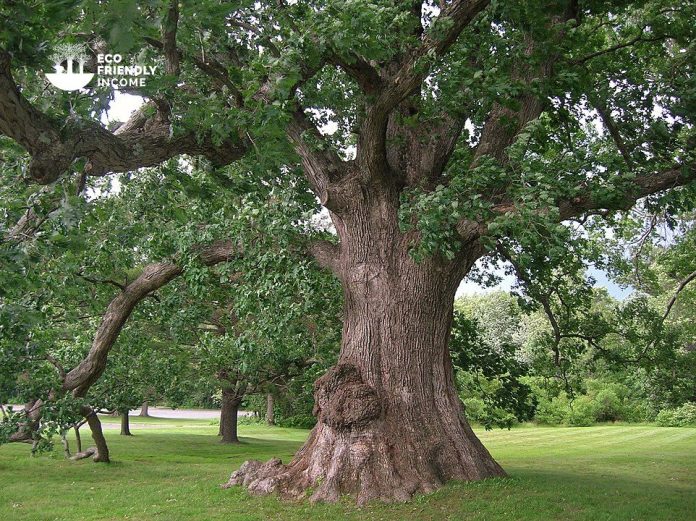
Featured Photo by Msact / CC BY-SA 3.0
A field guide on how to identify and propagate White Oak (Quercus alba), a hardy tree that is native to eastern North America.
How to Identify White Oak (Quercus alba)
Leaves
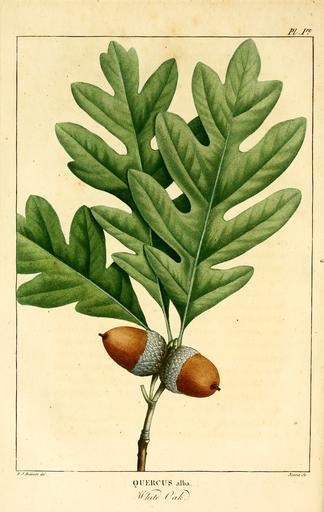
White oak leaves are obovate-shaped, with lobed margins, and grow in an alternate arrangement on the stem.
Each leaf usually has 7-9 lobes and is from 5-9 inches long.
Bark
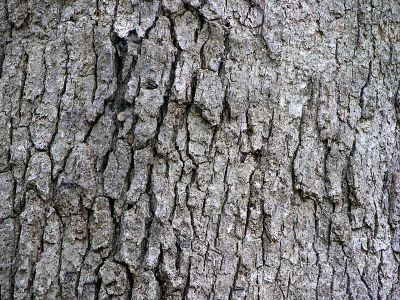
White oak bark is grey-brown in color and is made up of thick plates that have deep furrows that run between them.
It is a rough texture, and as the tree ages, you’ll see the furrows deepen and the surface of the bark become more ridged and cracked.
The outer bark is a reddish-brown color and is scaly, and it may feel slightly fuzzy to the touch. If you look at the inner bark, you’ll see it is a lighter brown color and is more fibrous in nature.
Fruit
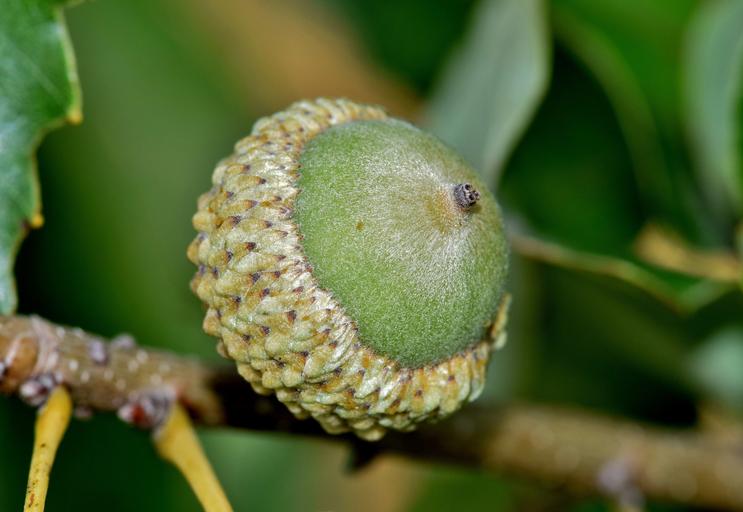
The acorn of a white oak tree is a small, round nut or seed. It has a hard, woody outer shell that is typically light brown in color.
It’s usually about 2-4 cm in diameter and is shaped like an egg.
Inside the acorn, there is a single seed. The seed is surrounded by a thin, papery inner shell, which is usually white or cream-colored.
Flowering Season
You can find acorns on white oaks typically by the end of summer and by mid-autumn they are mature and fall on the ground.
They can produce acorn crops every year if the tree is in good condition in an open spot. But usually, white oaks growing in the wild will only make acorns every 2-3 years.
Habitat
Quercus alba (white oak) is native to the eastern and central parts of North America.
It prefers moist well-drained soils and is frequently found in association with mesic hardwood forests and in riparian areas (riversides).
You can also find it growing in drier upland areas, particularly on south or west-facing slopes.
Some trees that often associate with white oak are:
- Eastern White Pine (Pinus strobus)
- Jackpine (Pinus banksiana)
- Eastern Hemlock (Tsuga canadensis)
- Sugar Maple (Acer saccharum)
Wildlife Value
White oak provides food and shelter for many species of birds, mammals, and other animals.
The large, spreading canopy of white oak trees provides a protective shelter from the elements, as well as from predators.
The acorns from white oak trees provide a nutritious food source for birds, mammals, and other animals.
Additionally, white oak trees also provide a habitat for many species of insects, such as butterflies, moths, and bees.
Finally, white oak trees help to enrich the soil. The leaves of the tree decompose, providing essential nutrients to the soil and helping to improve its fertility. This, in turn, helps other plants to thrive and supports a diverse and healthy ecosystem.
How to Propagate White Oak (Quercus alba)

Hardiness Zone: 3-9

Soil Type: Moist, well-drained clay, loam, sand.

Water: Normal

Exposure: Full Sun
You can propagate white oak effectively by using these two methods:
- Stem Cuttings: It provides established trees faster, but is tricky, and will probably have a lower success rate.
- By Seed: The success rate is high but takes longer to get established saplings.
With most oak species, the rarity of acorn crops can make it harder to propagate by seed. This is why we’ll also go into detail about stem cutting propagation.
Let’s take a look at both techniques:
How to Propagate White Oak (Quercus alba) by Seed
Now if you have access to white oak trees in your neighborhood or have spotted some in the wild while going on walks, you got a shot at propagating them with seeds.
Alternatively, you can order some acorns online at incredible seeds.
How to Harvest Seeds
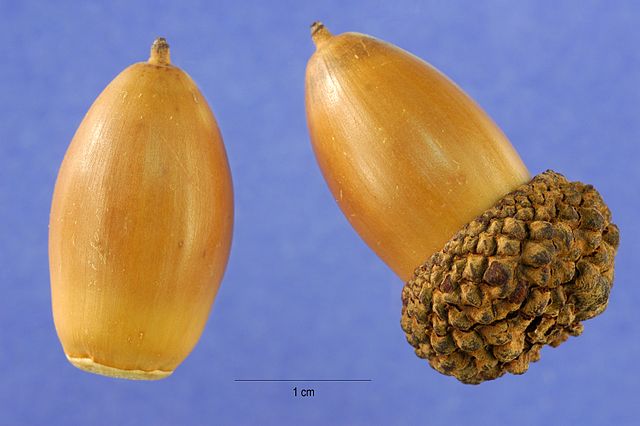
If you want to harvest white oak acorns, the key is just to get them at the right time of the year.
Given you found a tree that has acorn crops, it’s best to way until autumn to collect them.
Here’s how:
- First, collect sleek, brown acorns that are without caps.
- Afterward, check for any punctures or fissures, which may be signs of insect infestation.
- If possible, shake the branches of the tree; however, be cautious not to harm it.
- Finally, put the acorns in a bag or jar you brought for safekeeping.
Tip: Remember, do not leave them in the sun or in your car for long periods of time, as this can cause them to spoil!
Sowing
Before sowing, you can test the quality of an acorn to determine if it is good or bad.
The Float Test
- Fill a bowl with water and submerge the acorns (remove their caps first) for 15 minutes.
- Afterward, observe the results to determine the quality of the acorns.
- Those that float are damaged, while those that sink are of good quality.
Live acorns, due to their high moisture content, will sink whereas those that are damaged have air pockets which make them float.
Now with white oak, you do not need to cold stratify the acorns, you should plant them right away after harvest.
To sow acorns:
- First, fill a pot with potting soil.
- Next, place the acorns on the surface of the soil, making sure to space them evenly.
- Then, cover the acorns with mulch, and water the pot until the soil is damp but not saturated.
- Next, place the pot in a warm, sunny spot, indoors or outdoors, and keep the soil moist.
- When the acorns have sprouted, thin out the seedlings to allow the strongest one to grow.
- Finally, when the seedlings are around 6 inches tall, transplant them outdoors in a sunny area.
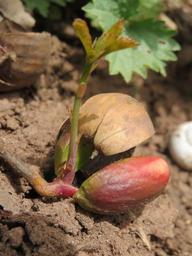
Oak acorns take between 4-6 weeks before they germinate.
How to Propagate White Oak (Quercus alba) by Cuttings
Now if you can’t get your hands on acorns, give a shot at propagating white oak by stem cuttings.
Important: Take cuttings only from young trees, older trees lose their ability to regenerate over the years.
In most areas, the best time to take stem cuttings from white oak is from the end of May until the end of August.

Now here’s how to get your oak cuttings:
- Start by locating branches from the prior year that have not fully lignified yet (they’ll still be on the green side). Note: You can take a single branch and create multiple cuttings from it.
- Snip below a node, aiming for a width of 1/4 to 1/2 inch for each cutting.
- Remove any side branches from the main stem and then cut the branch into 6-8 inch sections. Remember to always snip beneath the nodes.
Step 2: Rooting the Cuttings
- First, scuff up the base of the cuttings to expose the cambium.
- Then, dip the end of the cuttings in rooting hormone.
- Next, use a stick to make a hole in a rooting medium, place the cuttings into the hole and compact the soil around it.
- Finally, cover the propagation box and water regularly.
Oak cutting should form roots in about 6 weeks.
Recommended rooting medium: 3:1 Perlite & Peat, with slow-releasing fertilizer, ex. Osmocote Exact.
FAQ
Q: What is the rarest oak tree?
A: Well, the rarest oak is not the common white oak, but a subspecies called the mesa oak (Quercus engelmannii) that’s native to southern California and northwestern Baja California, Mexico.
Q: What is the lifespan of a white oak?
A: The white oak has a long life span, with individuals living up to five hundred to six hundred years, despite its slow growth rate.
Q: Where does white oak grow best?
A: White oak thrives on north and east-facing lower slopes and coves, as well as on moderately dry slopes and ridges with shallow soils. However, it cannot grow on extremely dry, shallow-soil ridges; poorly drained flats; or wet bottom land.
Q: What is white oak best used for?
A: White oak is often used for interior decorating purposes, such as furniture (particularly church furniture), cabinets, millwork, caskets, and hardwood flooring.
